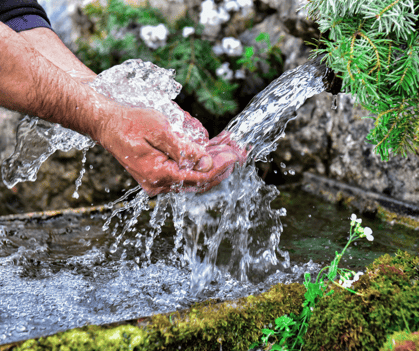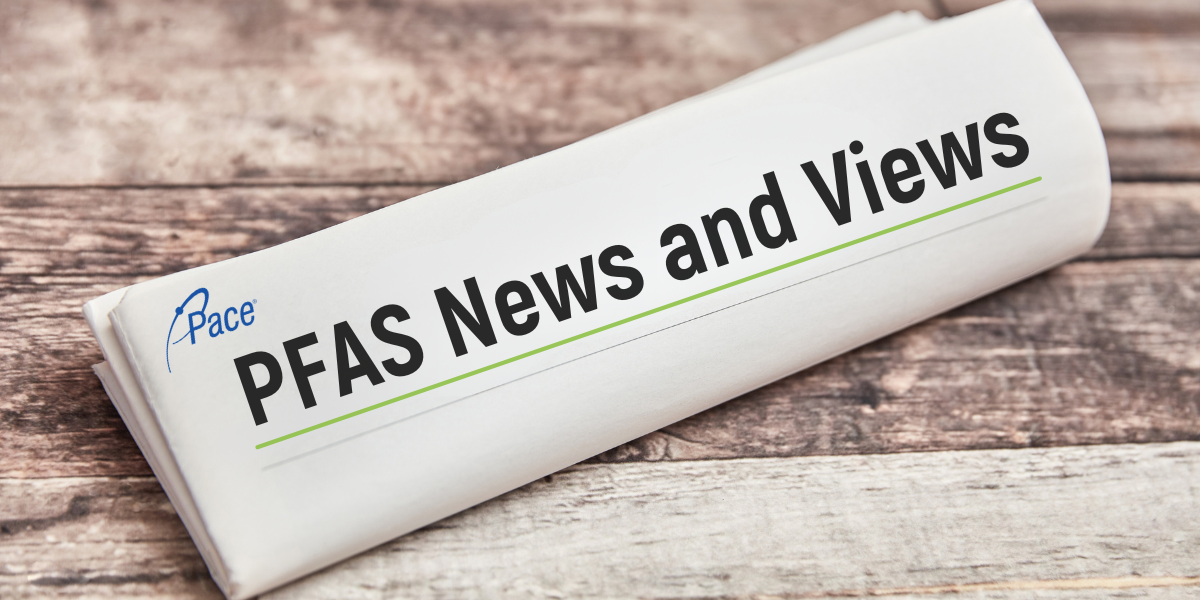Happy New Year! While we’re waiting for the EPA to publish final limits on PFAS in drinking water and to designate PFOA and PFOS as hazardous substances under CERCLA, there’s still plenty more PFAS in the news to focus on. This month, we’ll start with actions at the state level and then highlight some legislation percolating at the federal level.
Ringing in the New Year with New PFAS Prohibitions
As people across the country counted down the seconds until midnight, many probably didn’t realize they were also counting down the seconds to significant changes to laws governing PFAS in food packaging and other consumer goods in some states. Here are a few limits and bans on intentionally added PFAS that went into effect on January 1, 2024.
- Colorado now prohibits the sale or distribution of fiber-based food packaging and other products, such as fabric treatments, carpets, cosmetics, juvenile products, and textile furnishings, to which PFAS has been intentionally added.
- Maryland now prohibits intentionally added PFAS in Class B fire-fighting foam, rugs and carpets, and food packaging constructed of plant-based materials. Manufacturers of rugs and carpets are required to establish a Certificate of Compliance (CoC).
- Minnesota also banned intentionally added PFAS in food packaging, effective January 1, 2024. However, Minnesota’s law is a bit more expansive as it goes beyond those packaging materials that come into contact with the food. One frequently cited example is the ink used on an external package label.
Extended Bans on PFAS in Intentionally Added Products
Meanwhile, a couple of states that had planned limits on intentionally added PFAS in food packaging extended their deadlines.
- Rhode Island had initially set a ban on PFAS in food packaging that would take effect on January 1; however, the ban was extended to July 31, 2024.
- Maine had planned to follow Washington State’s approach to banning PFAS once safer alternatives could be identified. As a reminder, since February 2023, Washington has prohibited intentionally added PFAS in wraps, plates, food boats, and pizza boxes. The Maine Department of Ecology cites Washington’s Safer Alternatives Assessment, but elected to defer banning specific PFAS until more data could be gathered on their use in Maine and the economic impact of the ban.
Washington State Publishes Draft PFAS Regulatory Determinations
Speaking of Washington State, in December, the Washington State Department of Ecology (DOE) published its Draft Regulatory Determinations Report to the Legislature. This report identifies additional consumer products for which the DOE recommends restrictions based on the identification of safer alternatives. In its report, the agency recommends placing PFAS restrictions on apparel (not including shoes, professional apparel, or gear), cleaning products, and automotive washes.
Michigan Establishes Surface Water Values for PFAS
 In October, the Water Resource Division (WRD) of The Michigan Department of Environment, Great Lakes, and Energy (EGLE) announced that it had established additional water quality values (WQVs) for PFHxS and PFNA. Limits include 210 ppt of PFHxS and 30 ppt of PFNA for regular surface water and 59 ppt for PFHxS and 19 ppt for PFNA if the surface water is a protected drinking water source. Limits for PFOA (0.066 μg/L), PFOS (0.011 μg/L), and PFBS (8.3 μg/L) in surface water had already been established by the agency.
In October, the Water Resource Division (WRD) of The Michigan Department of Environment, Great Lakes, and Energy (EGLE) announced that it had established additional water quality values (WQVs) for PFHxS and PFNA. Limits include 210 ppt of PFHxS and 30 ppt of PFNA for regular surface water and 59 ppt for PFHxS and 19 ppt for PFNA if the surface water is a protected drinking water source. Limits for PFOA (0.066 μg/L), PFOS (0.011 μg/L), and PFBS (8.3 μg/L) in surface water had already been established by the agency.
Wisconsin Halts Groundwater Standards Due to Costs
Industrial dischargers of PFAS in Wisconsin got a reprieve last month when the Wisconsin DNR halted the implementation of its groundwater standards for four PFAS, including PFOA, PFOS, HFPO-DA (GenX), and PFBS. By law, the agency can only enact standards that exceed an implementation cost of $10 million with specific authorization from the state legislature. The cost of implementing the new standards was estimated to exceed $33 million in the first two years.
Vermont Publishes 2023 PFAS Roadmap
In December, the Vermont Agency of Natural Resources published its 2023 PFAS Roadmap. Although labeled 2023, this roadmap looks forward to how the agency plans to address PFAS moving forward.
2024 NDAA PFAS Provisions
Once again, the 2024 National Defense Authorization Act (NDAA) includes provisions regarding PFAS. As outlined in this article by Holland & Knight, many of the provisions relate to the identification, control, and remediation of PFAS at military sites. Section 334 authorizes the appropriation of $1 million to the DOD to award prizes for the development of technologies for the thermal destruction of PFAS. Given the many destruction technologies under development, the limited focus on thermal destruction is interesting.
No PFAS in Cosmetics Acts Reintroduced in Congress
In late November, the No PFAS in Cosmetics Act was reintroduced in Congress. This law would prohibit the use of intentionally added PFAS, defined as synthetic compounds with at least one fully fluorinated carbon, in cosmetic products and packaging. If passed, this law would repeal Section 3506 of the Modernization of Cosmetics Regulation Act of 2022.
PFAS Action Act Reintroduced in Congress
In December, representatives in D.C. also reintroduced the PFAS Action Act. This bill requires actions the EPA is already expected to take in 2024, including setting limits on certain PFAS in drinking water and designating certain PFAS as hazardous substances under CERCLA. Beyond that, the bill would require additional reporting and controls on PFAS. For example, the EPA would be required to designate PFOA and PFOS as hazardous air pollutants within 180 days and to place discharge limits on industrial releases of PFAS. A similar bill had previously passed the House but failed to become law.
Good News for Those Who Love Blue Crabs and Oysters!
Finally, it’s the new year, so we thought we’d end with some good news! If you’re still reeling from the small study that detected PFAS in kale last year, you might be interested in this story out of Maryland. While the state is telling residents to limit their consumption of certain types of fish, they’ve given the go-ahead for blue crabs and oysters saying the levels of PFAS detected are not concerning. I don’t know about you, but I’d swap my kale for a crab fest any day!




